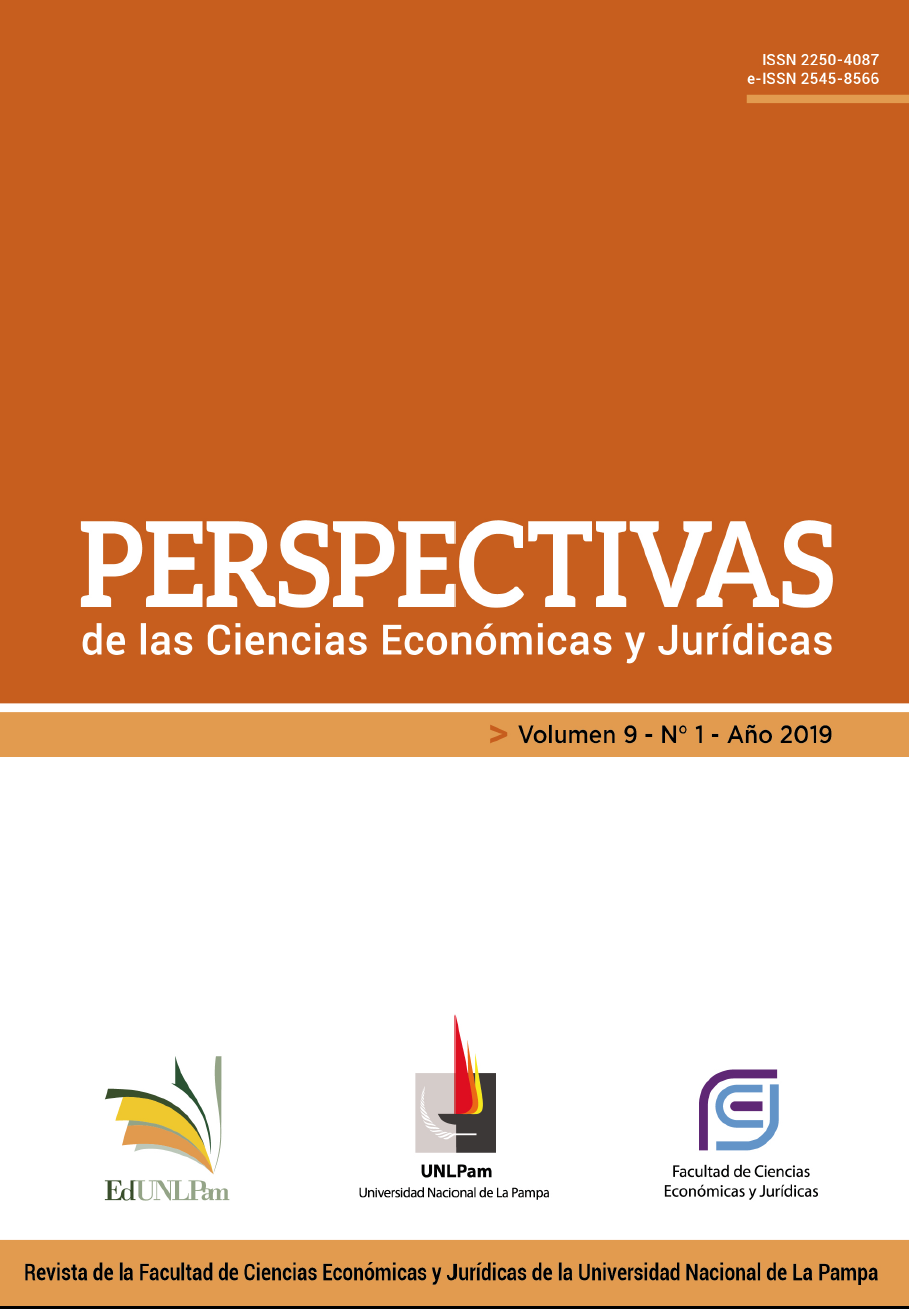BIASES IN DECISION MAKING
DOI:
https://doi.org/10.19137/perspectivas-2019-v9n1a06Keywords:
decision theory, bias, heuristicAbstract
Every day we make decisions, of all kind, under uncertainty. Decision-making a process that involves the evaluation of different variables. There are formal tools that help us to decide, but these tools are affected by the "biases" of our mind. The previous information that we have at the time of deciding helps us to solve, but the one who decides cannot have the absolute certainty, since our brain can distort the information.
From the cognitive perspective, between the environmental stimuli and the decisions of the people, finds an element that processes the information, that interprets the stimuli and chooses the answer, the psychology has been exploring the modalities and the effects of that processing on the taking of decisions. Its main contribution to this knowledge is the detection of cognitive biases, of inevitable distortions in the way of evaluating options and choosing. (Laca Arocena, 2012)
In general, making a decision is the act of choosing or selecting. It is a mental process in which it is possible to identify the actions that will be taken to solve a problem or a disjunctive to achieve an objective. It implies, then, having the freedom to choose within a series of possibilities. This action involves an intentionality, which comprises a series of values. In all types of organizations, decisions are made between the members that compose it and that are immersed in it. The decision-making process means a habit, or in an economic reductionist sense, an economy of efforts. The actions as they become a routine, are repeated and thus have a meaning that is gradually anchored in knowledge. (Vidal, 2012)
Downloads
References
Aguiar, F. (2004). Teoría de la decisión e incertidumbre: modelos normativos y descriptivos. Empiria. Revista de metodología de ciencias sociales , 139-160.
Alcala, J. L. (2014). Analisis de los factores cognitivos que inciden en la toma de decisiones de inversión de los administradores financieros de la ciudad de Barranquilla. Sotavento MBA , 8-22.
Bonatti, P. (2010). Los sesgos y trampas en la toma de decisiones. Obtenido de FORUM DOCUMENTS: http://forumdocumentos.blogspot.com/2010/10/
Bonatti, P. (2006). Propuesta de un enfoque integrador en teoría de la decisión
Bonatti, P y otros. (2007). Teoria de la Decision. Argentina: Prentice Hall.
Cortada de Kohan, N. (2008). Los sesgos cognitivos en la toma de decisiones. International Journal of Psychological Research , 68-73.
Elster, J. (1999). Alquimias de la mente. Barcelona: Paidos.
Elster, J. (2010). La explicación del comportamiento social: más tuercas y tornillos para las ciencias. Mexico: Gedisa.
Kahneman, D. (2003). Mapas de Racionalidad Limitada: psicología para una economía conductual. Revista Asturiana de Economía , 181-225.
Kahneman, D. (2014). Pensar rapido, pensar despacio. Barcelona: Debate.
Kahneman, D., & Tversky, A. (1979). Prospect theory: An analysis of decision. Econometrica 47 , 263-291.
Kahneman, D., & Tversky, A. (1973). The psychology of prediction. Psychological Review , 237-251.
Laca Arocena, F. A. (2012). Racionalidad Limitada en la Sociedad del Riesgo Mundial. Revista de Economía Institucional , 121-135.
Mahajan, J. (1992). The Overconfidence Effect in Marketing Management Predictions. Journal ofMarketing Research , 329-342.
Mascitti, M. (2016). Un enfoque interdisciplinario para la toma de decisiones en el mundo jurídico. Investigación y docencia , 228-274.
Paez Gallego, J. (2015). Teorías normativas y descriptivas de la toma de decisiones: un modelo integrador. Opción , 854-865.
Pavesi, P., Bonatti, P., & Avenburg, D. (2004). La Decisión. Buenos Aires: Norma.
Peñaloza Palomeque, M. (2010). Teoría de las decisiones. Perspectivas , 227-240.
Simon, H. A. (1997). El comportamiento administrativo. Un estudio de los procesos de decisión en las organizaciones administrativas. Buenos Aires: Errepar.
Simon, H. (2007). Ciencias de lo artificial. Comares.
Snyder, G. H., & Diesing, P. (1977). Conflict Among Nations Bargaining. Decision-Making and System Structure in International Crises . Princeton: Princeton University Press.
Sutherland, S. (2015). Irracionalidad, el enemigo interior. Alianza.
Tversky, A., & Kahneman, D. (1974). Judgment under Uncertainty: Heuristics and Biases. Science, New Series , 185 (4157), 1124-1131.
Vidal, J. (2012). Teoría de la decisión: proceso de interacciones u organizaciones como sistemas de decisiones. Cinta de Moebio: Revista de Epistemología de Ciencias Sociales , 136-152.
Downloads
Published
Issue
Section
License
Aquellos autores/as que tengan publicaciones con esta revista, aceptan los términos siguientes:- Los autores/as conservarán sus derechos de autor y garantizarán a la revista el derecho de primera publicación de su obra, el cuál estará simultáneamente sujeto a la Licencia de reconocimiento de Creative Commons que permite a terceros compartir la obra siempre que se indique su autor y su primera publicación esta revista.
- Los autores/as podrán adoptar otros acuerdos de licencia no exclusiva de distribución de la versión de la obra publicada (p. ej.: depositarla en un archivo telemático institucional o publicarla en un volumen monográfico) siempre que se indique la publicación inicial en esta revista.
- Se permite y recomienda a los autores/as difundir su obra a través de Internet (p. ej.: en archivos telemáticos institucionales o en su página web) antes y durante el proceso de envío, lo cual puede producir intercambios interesantes y aumentar las citas de la obra publicada. (Véase El efecto del acceso abierto).











.png)



5.jpg)












